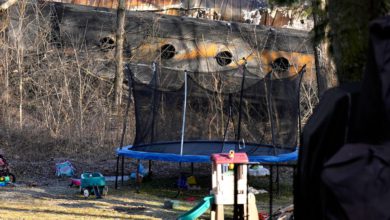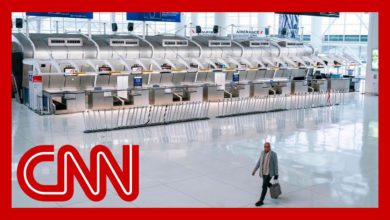
As Gov. Mike DeWine applies pressure to get COVID-19 vaccines administered faster throughout Ohio, those charged with inoculating people against the virus say a combination of factors has contributed to a slow rollout.
Vaccines arrived during the holidays, when more workers were off and less likely to be available to get the vaccine. In some cases, “vaccine hesitancy” has contributed to lower demand as well, they say.
Shipments also have been unpredictable, sometimes arriving later than expected or in smaller quantities than previous allotments, making it difficult to plan for distributing it to health care workers and others on the frontlines of the pandemic.
Slow rollout nationwide:Ohio vaccinates more than 70,000 as U.S. on pace to miss 20 million mark by end of 2020
Protocols require a 15-minute observation window for each patient, limiting the number of people who can cycle through a chair each day.
“This is not your routine stop by the primary care office to get a flu shot. This is a whole different operation,” said Dr. Andy Thomas, chief clinical officer at Ohio State University's Wexner Medical Center.
Similar problems have plagued the vaccine rollout nationwide, as a relatively small percentage of vaccines distributed from the federal government have made their way into the arms of patients.
On Wednesday, DeWine said that he had grown “impatient” with the rollout and challenged hospitals to administer the vaccine within 24 hours of receiving it, calling it a “moral imperative” to get the vaccine out as quickly as possible.
The governor said he wanted to instill a “sense of urgency” among those who are eligible for the vaccine to get it at the first opportunity.
Vaccine's arrival at nursing homes:DeWine says 60% of nursing home workers not electing to get vaccine

As of Thursday, the state had vaccinated 119,401 people. But it expected to receive 529,900 doses by the end of last week, and on Wednesday the governor said 238,175 doses, including a batch of second doses from Pfizer for those already vaccinated, are expected this week.
Ohio hospitals are “doing everything possible to get eligible caregivers vaccinated,” said John Palmer, spokesman for the Ohio Hospital Association, noting that hospitals already are increasing distribution efforts to match greater supply of the vaccine.
“Hospitals are not working in a vacuum and are very much accustomed to integrating state and federal public health strategies related to managing vaccination distribution,” he said in an email.
Columbus Public Health had received 5,000 doses of the Moderna vaccine as of Thursday, but only administered about half of those doses, said Dr. Mysheika Roberts, Columbus health commissioner.
“I share the governor’s disappointment,” Roberts said.
Setting an example:Suburban fire chiefs roll up their sleeves to encourage first responders to get vaccine
Columbus Public Health set up a drive-through vaccination clinic the day after Christmas at the state fairgrounds, where it can vaccinate as many as 500 people a day, she said, but it was getting far fewer appointments.
Roberts blamed the slow rollout on two things: the vaccine arrived during the holidays and “vaccine hesitancy” among some who are skeptical about getting it.
“There are a lot of people out there who are eligible who are saying, 'I’m going to wait,'” she said.
Virus in schools:Ohio students exposed to COVID-19 in classroom won't have to quarantine
Public health departments are one leg of a three-legged stool for vaccine distribution.
Hospitals are administering the vaccine to their own workers; four pharmacies are going into nursing homes and assisted living facilities to offer it to residents and employees; and public health departments are picking up much of the rest of those who are eligible, including health care workers in some outpatient facilities, EMS, home health aides and those working in other congregate settings, among some others.
On Wednesday, DeWine lamented that about 60% of nursing home staff so far were refusing the vaccine and warned that they might be forced to wait for another chance to receive it if they didn’t take advantage now.
The head of the association representing many assisted-living and skilled-nursing residences across the state said he is hopeful that employees of those facilities who were initially reluctant to receive coronavirus inoculations would opt for vaccinations after seeing no ill effects of the shots on their co-workers.
“Hopefully, when the second clinic rolls around, those folks will step up and roll up their sleeves,” said Pete Van Runkle, executive director of the Ohio Health Care Association, which represents 1,100-plus care providers. “We’re expecting that there will be a considerable number of people who will do that and we’ll get our numbers up to where they need to be.”
He added: “This is a very safe and effective vaccine, and most importantly, this is how we save the lives of the people that we’re taking care of.”
Skepticism high in certain communities:History of medical mistrust, deceit leads some Black people to question COVID vaccine
Many employees chose not to during the first clinic sessions, however, some out of fears stoked about alleged dangers of the vaccines.
“It’s a challenge,” Van Runkle said. “These individuals, the staff members, are afraid. They’ve heard a lot of things on social media, and it’s somewhat become politicized. And there’s also a fair amount of a wait-and-see kind of approach.”
Vaccine distribution to nursing homes and other facilities that provide care and related services to residents is being handled by four pharmacy partners, including CVS and Walgreens.
The first of those clinics took place about a week before Christmas, with two follow-up clinics, spaced about three weeks apart, planned for each location for initial or second doses of the vaccine.
Overall, the distribution process has gone relatively smoothly. Van Runkle said some clinics had to be postponed, and there were other hiccups in the process but nothing too out of the ordinary, given the scope and pace of the vaccination rollout.
“By and large, when you look at the big picture, it’s going well,” he said.
Ohio State’s Thomas said hospitals have been challenged by unpredictable distributions of the vaccine. For example, a hospital might get a large shipment one week and then a small one the following week, or shipments might arrive later than originally expected.
“We’re kind of building the distribution system for the vaccine a little on the fly,” he said.
More:DeWine: Ohioans age 65 and over, school employees next in line for virus vaccines
Smaller hospitals that were getting a smaller inventory of doses initially also have been waiting to schedule appointments to administer the vaccine until they’re sure about the quantity arriving, he said.
By the end of the day Saturday, he said Ohio State will have vaccinated about 5,600 people. Ohio State has invited about 14,000 people to be vaccinated, but Thomas pointed out that about a quarter of those notices went out this week when many employees likely were on vacation.
Hospitals also are preparing for the next phase of vaccine distribution as well, he said, which will include those age 65 and older along with teachers and staff in schools. That will require another shift in strategy.
“We’ve just gotten this system going and now we’re going to be looking to pivot and looking at a general population that’s going to be slightly different,” he said. “It’s all a learning curve.”
@RickRouan
@ohiocapitalblog
Ohio's COVID-19 cases by county
Source link








